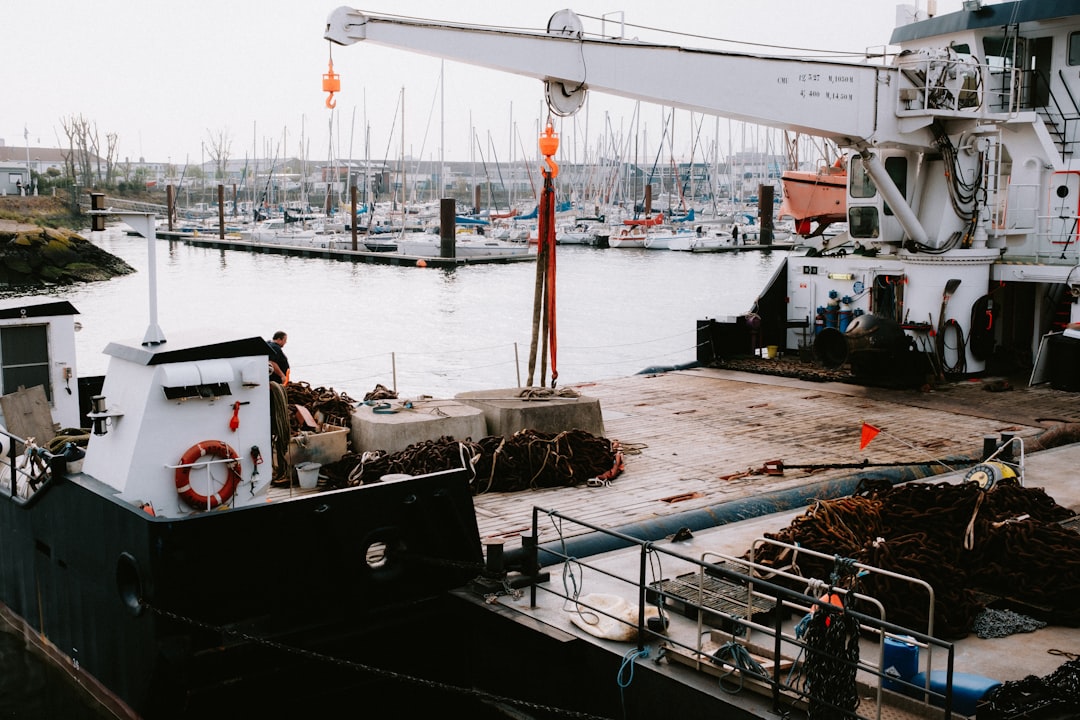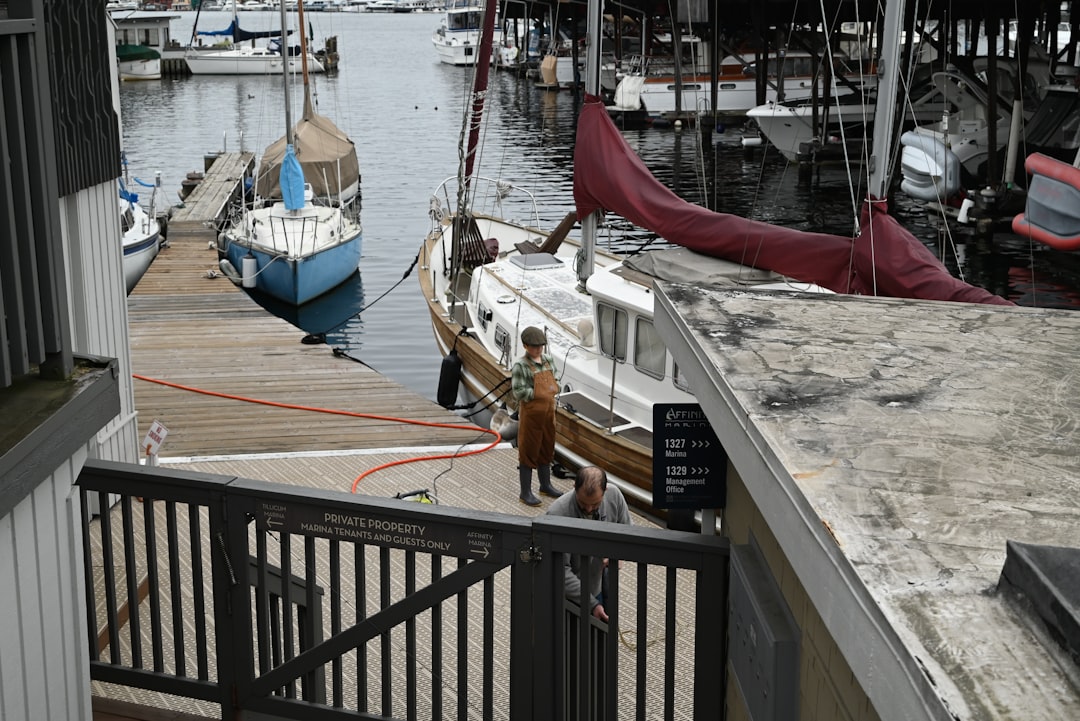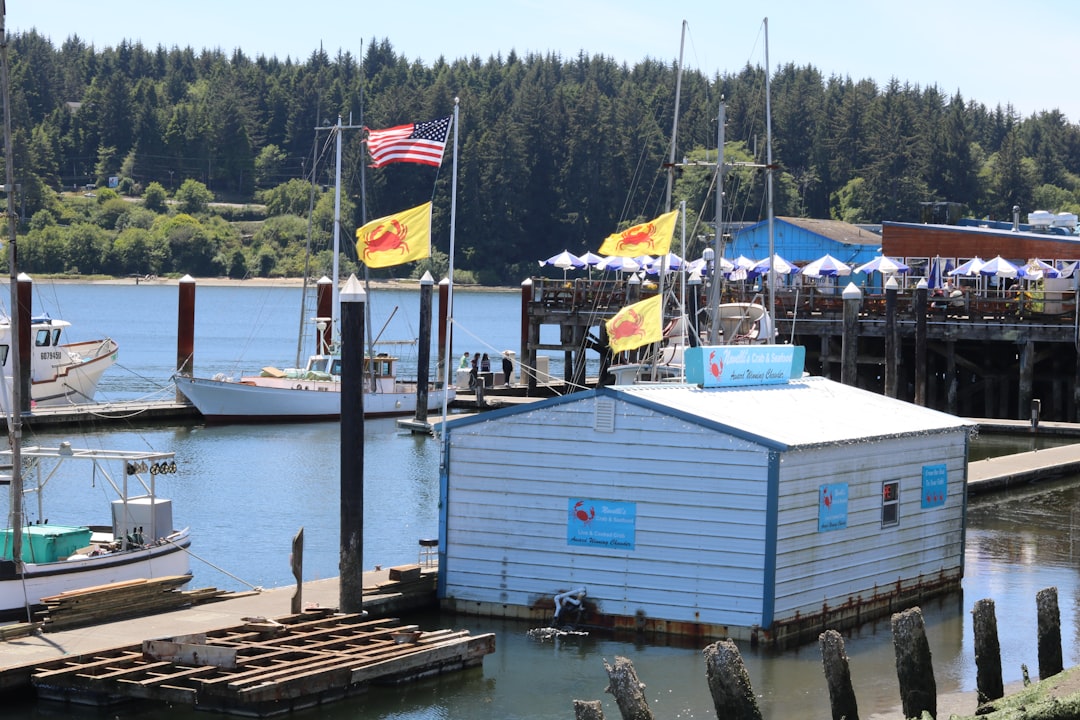

Engage prospects with a scan and streamline customer engagement with FREE QR code marketing tools by Sona – no strings attached!
Create a Free QR CodeFree consultation

No commitment

Engage prospects with a scan and streamline customer engagement with FREE QR code marketing tools by Sona – no strings attached!
Create a Free QR CodeFree consultation

No commitment
Boat dock repair services face unique marketing and operational challenges in today’s fast-moving, connected world. Prospective clients such as marina managers, waterfront property owners, and commercial operators often expect fast answers about dock repair cost, safety compliance, and the best materials for boat dock construction. Engagement can slip through the cracks when interest is not captured at the moment of intent, causing lost opportunities when competitor outreach arrives first.
QR codes now offer a frictionless, highly effective bridge between offline environments and digital workflows. Unlike printed brochures or manual sign-up sheets that leave anonymous dockside interest untracked, QR codes empower visitors to instantly access maintenance guides, quote requests, appointment scheduling, and safety checks, all without requiring an app download or data entry on paper. This addresses the pain of missing critical prospect data, bringing measurable improvements in customer engagement, operational efficiency, and the ability to convert qualified leads on the spot while keeping your outreach both timely and actionable.
By integrating QR codes across the customer journey, from the initial inquiry at the dock to post-repair feedback, boat dock repair services can capture valuable engagement signals in real time and enrich their databases with timely, account-level detail. This paves the way for more personalized, proactive follow-up and helps avoid common pitfalls like incomplete CRM records or missed upsell opportunities. Here’s how to strategically deploy QR codes and unlock next-level growth and responsiveness for your boat dock repair business.

QR codes are transforming the way boat dock repair services engage with prospects and existing customers at every physical touchpoint. Traditional approaches like handing out flyers or relying on client-initiated form submissions often let motivated buyers slip away untracked. Without a mechanism to capture those browsing your signage, reading brochures, or reviewing project proposals, your potential pipeline shrinks and anonymized traffic remains out of reach.
Replacing analog handouts with digital entry points allows your brand to meet buyers in the moment and move them directly to conversion paths. Instead of a paper estimate or a generic brochure that gets tossed, a scannable code can drive to a mobile-friendly repair intake form, a cost calculator, or a safety checklist with one action. That single scan becomes an intent signal you can route to sales and service teams, shortening response times and elevating the customer experience. Try it on a safety checklist.
Example: A dockside safety sign equipped with a QR code connects property managers directly to a digital safety checklist and issue report form, capturing their identity and urgency before they navigate elsewhere or forget. Modern platforms like Sona QR automate this handoff, populate segmented CRM records, and trigger outreach well ahead of the competition.
When you replace friction-heavy steps with one-tap actions, real-time capture becomes the default. Over time, you will see patterns in who scans, when they scan, and what they need. Those insights create a cycle of continuous improvement that compounds pipeline growth and customer satisfaction. Start for free on Sona QR.

In an industry where many critical customer engagements still happen on-site at the dock, marina, or boathouse, visibility into who interacts with your brand is often limited. This lack of insight means high-value leads frequently remain anonymous, leaving sales teams in the dark and reactive rather than proactive. QR codes convert these invisible touchpoints into measurable, actionable moments that drive faster responses and more relevant follow-ups.
Another advantage is the simplicity of the scan experience. No one wants to find a website, scroll through menus, and locate a form under time pressure. A well-placed QR code solving a specific problem streamlines the customer journey and reduces drop-off. It also keeps print materials relevant by linking to content that can evolve as regulations, materials, and service packages change.
For instance, including a QR code on marine facility signage or direct mail translates in-person curiosity into digital engagement and lead data. Even a simple CTA like Scan to request a dock inspection can materially improve booking rates and give you context that makes follow-up precise and timely.
Most boat dock repair organizations face challenges in collecting detailed, accurate lead data and delivering content at just the right moment. The right mix of QR code types can address these barriers while supporting different goals and contexts across your service journey.
Choosing formats aligned with each task ensures the experience feels natural. A vCard for a service manager on a job site makes contact saving effortless. A form link inside a direct mailer turns a passive impression into an active inquiry. A dynamic URL on a safety placard can pivot from storm readiness tips in the fall to maintenance scheduling in the spring, all without reprinting.
Dynamic QR codes that allow destination changes without reprinting offer insurance against changing messaging or offers. Your assets stay useful for longer, your data remains comprehensive, and your campaigns can adapt to conditions like weather events or seasonal demand.

QR code deployment is most impactful when embedded in the service journey where missed engagement typically causes lost revenue or extended downtime. High-traffic docks, marinas, waterfront communities, and events concentrate your audience. Converting those interactions to digital actions recovers value that would otherwise be lost.
Think of every physical surface as a potential onramp. A project tag can link to warranty information, care instructions, or an upgrade path. An inspection notice can route to a rescheduling form or a safety checklist tailored to a dock’s construction material. Even crew vehicles can host a code for emergency repair requests tied to geolocation.
Meeting buyers at these critical moments increases the odds of securing a response before a competitor does. It also builds a structured, attributable funnel from what was previously anonymous foot traffic.

Traditional methods like manual repair intake, static product guides, and generic business cards frequently fail to surface signals that clients are considering new projects. QR-enabled touchpoints make intent explicit and measurable, revealing when a customer moves from issue reporting to exploring upgrades or preventative maintenance.
By mapping QR experiences to typical customer questions, you can help people move faster through decisions and provide your team a richer picture of what each account needs. The result is less guesswork, more relevant outreach, and higher conversion on both reactive and proactive services.
Supplement these with targeted follow-up. For example, scanning a material guide could trigger an email with financing options, while a maintenance request might route to SMS for quicker scheduling. Each scan informs your next best action.
A persistent challenge in marine repair marketing is knowing who is showing purchase intent before they submit a form. QR code campaigns solve this by turning every scan into a data point. Tagging scans by content type, location, and timing enables personalized follow-up, even when formal inquiries have not been completed. For deeper campaign ideas, see Intent-driven retargeting from Sona.
Segmentation works best when your QR destinations are purpose-built by stage. Awareness-level content should be digestible and value-led. Consideration assets should compare options, add credibility, and nudge toward booking. Conversion targets should simplify scheduling and payment. When each code aligns to a stage, your retargeting becomes precise and helpful. If you want to understand the signals behind this, read Sona’s blog on the essential guide to intent data.
By using scan signals instead of guesswork, you can route sales attention to the right accounts, deliver content that answers current questions, and reduce the risk of late or irrelevant follow-up.
Boat dock repair businesses often struggle to unify offline lead capture with digital nurturing and attribution. QR codes connect these channels, ensuring every physical touchpoint can feed your CRM and every campaign can be measured for impact. To connect offline scans with outcomes, see Sona’s offline attribution guidance.
Consider where your audience already engages. Marinas use signage, inspections, and service tags. Homeowners respond to direct mail, local magazines, and HOA communications. Contractors and facility managers attend regional expos and safety seminars. QR codes match these realities by delivering one-tap digital actions from the materials people already see.
QR codes serve as the offline onramp to your digital engine and unlock a new layer of measurement across historically opaque channels. With a centralized platform like Sona QR, you can manage codes at scale, monitor performance, and sync scan data with your CRM and ad tools for coordinated campaigns.
Launching a QR program for boat dock repair does not need to be complex. The most effective campaigns start with a specific business outcome, match the code type to the job, and build in tracking so you can prove results. The steps below outline a repeatable framework your team can use across seasons, events, and services.
Treat this checklist as an iterative loop. Start with one high-impact use case, gather baseline data, then expand to adjacent placements. As scans and conversions accumulate, refine your designs, CTAs, and destinations to reduce friction and lift performance.
Many dock repair services fall short in connecting campaign engagement to business outcomes. Measuring success on scan volume alone is incomplete. The goal is to link each scan to downstream actions such as quotes, site visits, and won revenue. When you can attribute outcomes to individual codes and placements, budget decisions become clear and defensible. For foundations, see Sona’s post on revenue attribution.
A robust analytics setup also improves prioritization. Knowing that a scan came from a commercial marina on a weekday morning can trigger a same-day call from your commercial team. Understanding that a scan originated from a storm damage sign during a weather alert can elevate urgency in routing and messaging.
With Sona QR and Sona, teams can track every scan, unify fragmented touchpoints across the buying journey, and attribute revenue back to QR-driven interactions. You can respond in real time, enrich records in HubSpot or Salesforce, and connect offline scans with web activity and ad clicks for a complete view of progression from first touch to purchase readiness.
Consistent QR execution delivers compounding benefits: cleaner attribution, faster follow-up, and stronger unit economics. The keys are differentiation by placement, automation of next steps, and education for both staff and customers so scanning feels natural and rewarding.
As you scale, think about the content experience behind each scan. A code that leads to a generic homepage underperforms. A code that delivers a short video on floating dock repairs, a checklist download, and a one-click scheduler turns interest into action.
Creative deployment example: Add a QR code to storm-readiness door hangers that opens a checklist and instant inspection request. Another example: Include a code on post-repair invoices that invites customers to record a quick video testimonial or refer a neighbor, feeding a measurable word-of-mouth loop.

Practical success stories illustrate how QR codes convert offline interest into measurable results. They also provide inspiration for placements and experiences that fit the marine environment. When you see how others apply the strategy, it becomes easier to adapt the ideas to your operation and customer base.
The following scenarios blend safety, operations, and marketing outcomes. They show how small changes in process can yield outsized gains in compliance, pipeline, and customer satisfaction.
By pairing each code with a precise outcome and an easy action, these teams made it simple for customers to help themselves and for staff to act on clean, timely data.
Successful QR programs balance clarity, durability, and data discipline. Clear CTAs tell scanners exactly what they will get. Durable materials and glare-resistant designs ensure the scan works whenever it is needed. Strong data hygiene ties each scan to a destination, a segment, and a follow-up plan that your team can execute without manual effort.
Common pitfalls usually stem from ambiguity and neglect. Codes without context rarely get scanned. Codes printed small, placed in high-glare or weather-beaten spots, or pointing to stale content frustrate users and erode trust. Avoid these missteps with a short, recurring audit that checks design, placement, and content relevancy.
QR codes now serve as a vital touchpoint in the evolution of boat dock repair services, bridging offline intent with real-time digital engagement. By transforming previously anonymous or delayed interactions into actionable data and personalized outreach, these tools expand the reach, timing, and effectiveness of every campaign. With a cohesive QR code strategy powered by platforms like Sona QR, repair businesses can reduce missed opportunities, speed up response times, and connect every scan to meaningful business outcomes. As the marine services industry continues to modernize, integrating QR-driven engagement and analytics equips your team to capture, nurture, and convert the right buyers more effectively, ensuring sustainable growth and stronger client relationships at every stage of the customer journey. Start creating QR codes for free.
QR codes have revolutionized the boat dock repair services industry by transforming traditional service access into seamless, measurable interactions. Whether it’s streamlining appointment bookings, providing instant access to repair manuals, or delivering timely maintenance reminders, QR codes replace cumbersome processes with quick, mobile-friendly actions that enhance customer satisfaction and operational efficiency. Imagine your clients effortlessly scanning a code to schedule repairs or view personalized service updates—making every interaction smooth and valuable.
With Sona QR, you can create dynamic, trackable QR codes in seconds, update information instantly without reprinting, and tie every scan directly to customer engagement and revenue growth. No missed leads, no outdated materials—just smarter, more effective service delivery. Start for free with Sona QR today and turn every scan into a loyal customer and a thriving business opportunity.
Signs include safety hazards reported via dockside maintenance request signage, visible damage, or when marina managers or property owners notice issues that require scheduling inspections before problems escalate.
Boat dock repair costs vary, but QR codes linked to cost calculators and quote request forms enable prospective clients to get accurate, real-time estimates.
The best materials depend on factors like weather performance and maintenance needs; QR code-enabled material selection guides provide side-by-side comparisons and expert recommendations.
You can use QR codes on dock signage, brochures, or direct mail that link to service menus, request forms, and contact vCards to quickly connect with local, reputable repair services.
Common services include emergency repair intake, off-season maintenance scheduling, safety compliance inspections, material consultations, and post-repair feedback collection.
QR codes enable instant access to maintenance guides, quote requests, appointment scheduling, and safety checks, capturing valuable lead data in real time and streamlining customer interactions.
Effective placements include dock and marina signage, safety panels, repair invoices, project completion tags, direct mail, trade show materials, and crew vehicles.
Useful QR code types include dynamic URLs for landing pages, vCards for contact sharing, form submissions for repair requests, and app download links for maintenance tools.
By tracking scan metadata such as location and time, attributing downstream actions like quotes and bookings to specific codes, and integrating scan data with CRM workflows to analyze funnel performance.
Avoid ambiguous CTAs, poor code placement susceptible to weather or glare, stale content, and lack of staff training to ensure QR codes are scanned and followed up effectively.
By assigning unique QR codes by context and audience, tagging scans by location and time, and syncing data with CRM and ad platforms to enable personalized, intent-driven follow-up campaigns.
QR codes convert anonymous dockside interest into tracked digital signals, enabling immediate routing of inquiries to sales and service teams for faster, more precise follow-up.
Use Sona QR's trackable codes to improve customer acquisition and engagement today.
Create Your FREE Trackable QR Code in SecondsJoin results-focused teams combining Sona Platform automation with advanced Google Ads strategies to scale lead generation

Connect your existing CRM

Free Account Enrichment

No setup fees
No commitment required

Free consultation

Get a custom Google Ads roadmap for your business






Launch campaigns that generate qualified leads in 30 days or less.
